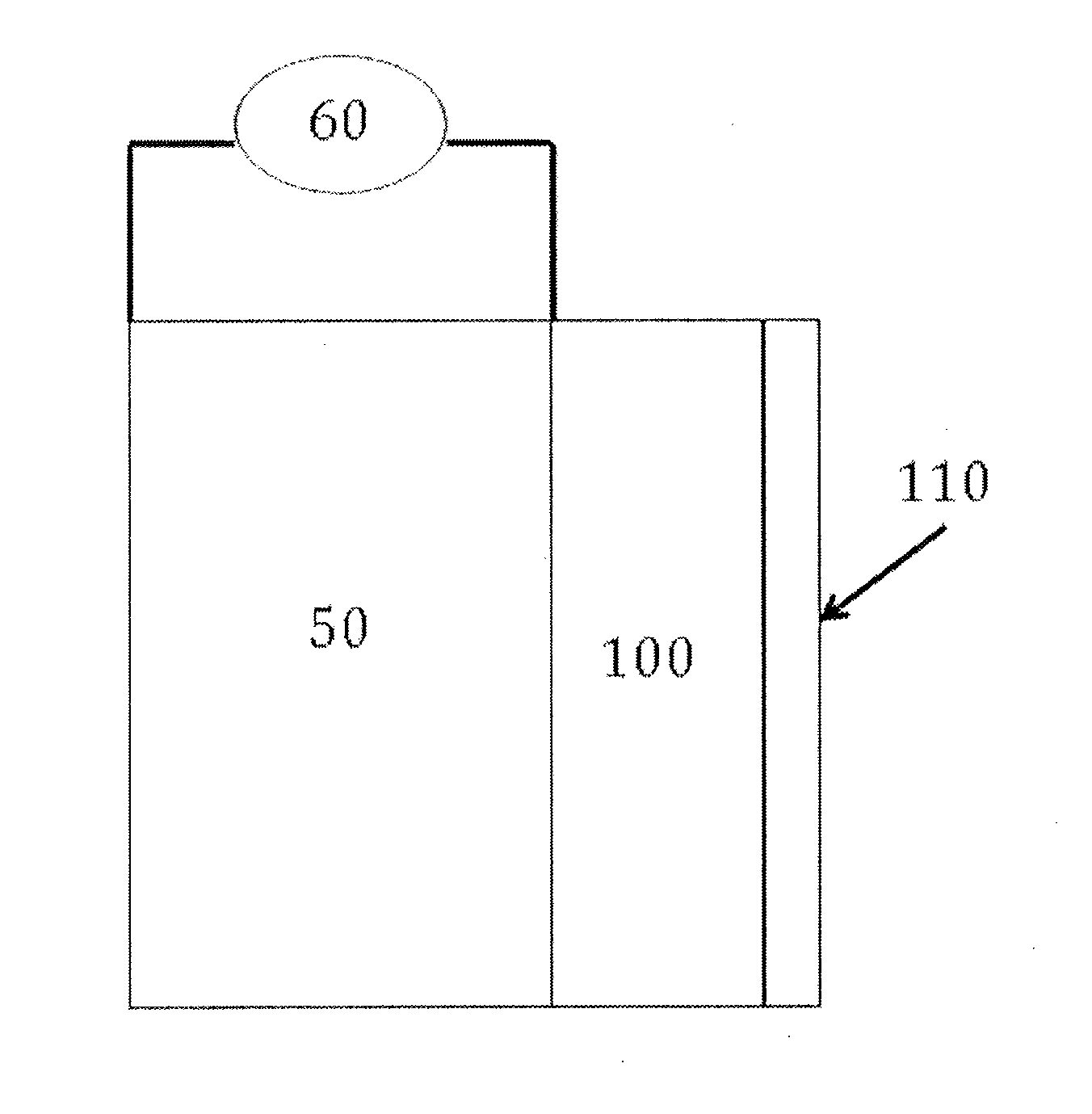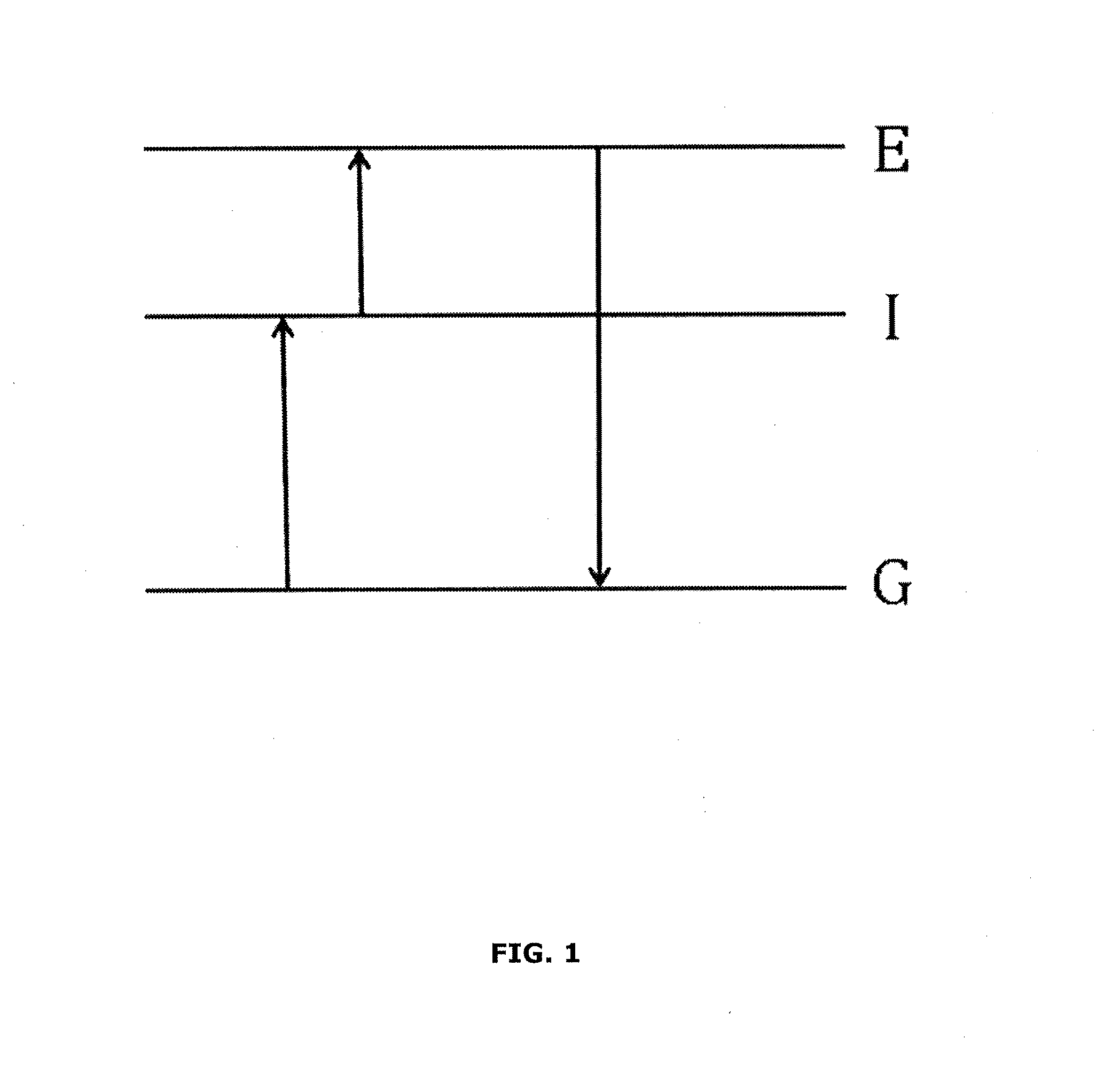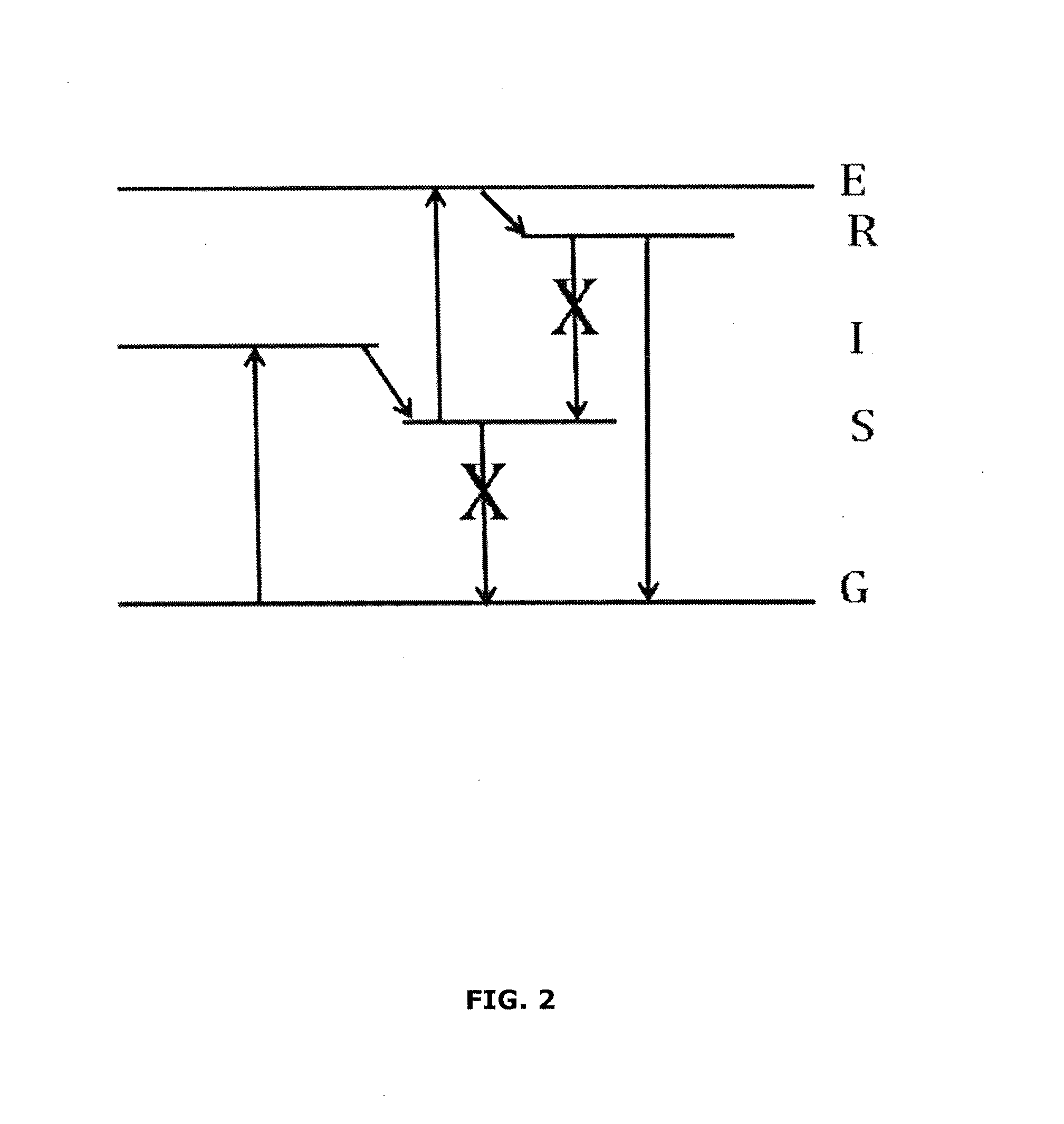Systems for efficient photon upconversion
a photon upconversion and photon technology, applied in the field of systems, can solve the problems of not beginning to significantly displace fossil fuels, installation cost of pv systems comes from pv modules, installation, electronics and land costs,
- Summary
- Abstract
- Description
- Claims
- Application Information
AI Technical Summary
Benefits of technology
Problems solved by technology
Method used
Image
Examples
Embodiment Construction
[0018]The present invention will now be described in detail with reference to a few preferred embodiments thereof as illustrated in the accompanying drawings. In the following description, numerous specific details are set forth in order to provide a thorough understanding of the present invention. It will be apparent, however, to one skilled in the art, that the present invention may be practiced without some or all of these specific details. In other instances, well known process steps and / or structures have not been described in detail in order to not unnecessarily obscure the present invention.
[0019]In an ideal upconversion process, the sequential absorption of two low-energy photons promotes an electron from the ground state (G) to an intermediate state (I) and then to an excited state (E), as shown in FIG. 1. The electron then radiatively relaxes from the E to G state, emitting a high-energy photon. The presence of the I state introduces both nonradiative (thermal) and radiati...
PUM
 Login to View More
Login to View More Abstract
Description
Claims
Application Information
 Login to View More
Login to View More - R&D
- Intellectual Property
- Life Sciences
- Materials
- Tech Scout
- Unparalleled Data Quality
- Higher Quality Content
- 60% Fewer Hallucinations
Browse by: Latest US Patents, China's latest patents, Technical Efficacy Thesaurus, Application Domain, Technology Topic, Popular Technical Reports.
© 2025 PatSnap. All rights reserved.Legal|Privacy policy|Modern Slavery Act Transparency Statement|Sitemap|About US| Contact US: help@patsnap.com



